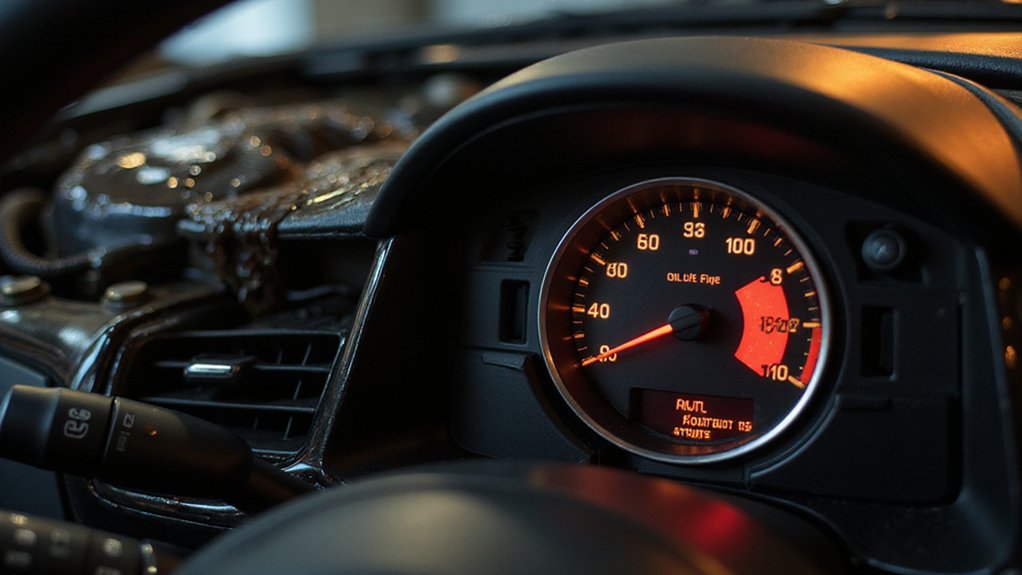Since the late 1980s, cars have been getting smarter about telling drivers when to change their oil. That little dashboard light or message isn’t magic though. It’s just math. Cold, hard algorithms crunching numbers about how you drive, where you drive, and how often you start that engine on freezing mornings.
The oil life monitor tracks everything. Miles driven, engine temperature, how long the car sits idle at drive-thrus. Short trips to the grocery store? It knows. Hour-long highway cruises? Logged. The system counts engine cycles like a suspicious accountant and monitors ambient temperature obsessively. It calculates trip durations alongside idle time to determine how hard your oil is working.
The system counts engine cycles like a suspicious accountant and monitors ambient temperature obsessively.
Yet here’s the twist – it never actually checks the oil itself. Not once. The monitor has no clue if your oil looks like chocolate milk or smells like burnt toast. Instead, engineers programmed these systems with predictive models based on thousands of hours of testing. The algorithms estimate when oil breaks down using indirect data. It’s educated guesswork, basically. Good guesswork, but still guesswork.
The benefits are real though. Drivers save money by not changing oil every 3,000 miles like their paranoid uncle insists. Less oil gets dumped unnecessarily. The environment wins. Wallets win. Everyone’s happy until something goes wrong. Highway driving actually extends oil life, so the system adjusts its warning light timing based on your driving patterns.
And things can go wrong. Reset the monitor without changing the oil? Engine damage awaits. Use the car for towing boats every weekend? The system might miss that your oil’s getting tortured. These monitors work great for typical suburban driving. Push beyond that, and accuracy drops.
Studies show the systems are generally reliable. They build in safety margins, alerting drivers well before oil becomes engine-destroying sludge. But they’re not foolproof. Severe conditions like racing or extreme temperatures can fool the algorithms. The monitor thinks everything’s fine while the oil slowly cooks itself to death.
Smart drivers treat these monitors as helpful guides, not gospel truth. They listen for weird engine noises. Check oil levels manually sometimes. Maybe even send samples to labs if they’re really pushing their vehicles hard. Because while that dashboard light is clever, it’s not clairvoyant. It’s just doing math, hoping the formulas match reality.
References
- https://blog.amsoil.com/oil-life-monitors-everything-you-need-to-know/
- https://www.parkmuffler.com/blog/oil-life-monitors-should-they-be-trusted/
- https://www.youtube.com/watch?v=Kc-FvomgE9E
- https://www.wallacechev.com/blog/oil-life-monitoring-what-is-it/
- https://bobistheoilguy.com/forums/threads/gm-oil-life-monitor-how-does-it-work.371835/









